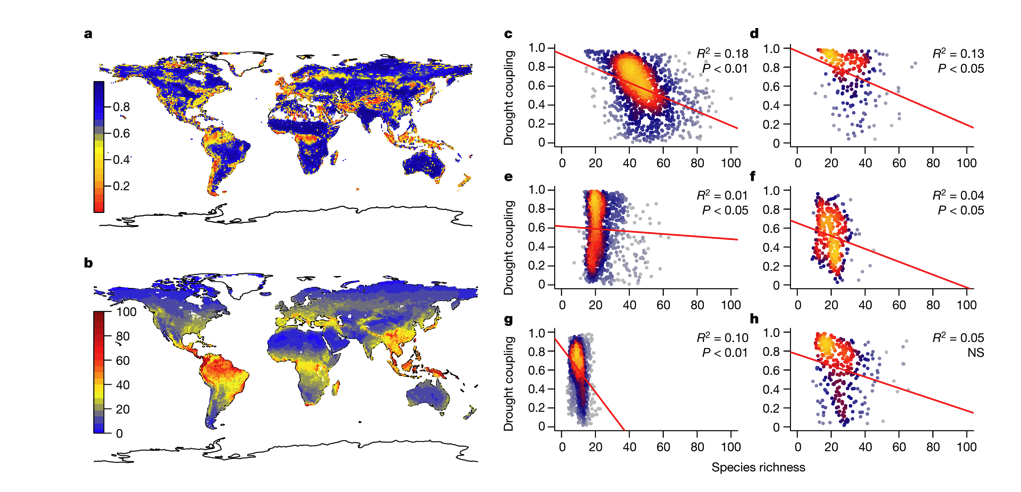1.Title, Journal and Authors
Title: Hydraulic diversity of forests regulates ecosystem resilience during drought
Journal: Nature
- Authors: William R. L. Anderegg,
- Alexandra G. Konings,
- Anna T. Trugman,
- Kailiang Yu,
- David R. Bowling,
- Robert Gabbitas,
- Daniel S. Karp,
- Stephen Pacala,
- John S. Sperry,
- Benjamin N. Sulman &
- Nicole Zenes
2. Figure & Table
Figure 1. Variation in hydraulic traits mediates ecosystem flux response to drought.
Figure 2. Ecosystem sensitivity to drought as a function of community variation in hydraulic safety margin.
Figure 3. Forest ecosystem response to drought estimated from remote-sensing-derived vegetation water content variation is influenced by species richness.
3. Summary for graphical format
To analyze the ecosystem resilience during drought, lots of hydraulic traits are needed. In this paper, 12 hydraulic traits are used and these are enumerated in Figure 1.. To visualize this information, 4 methods are used in Figure 2. The two types of leaf are expressed with two different colors. And the size of points involves lots of hydraulic diversity. Still, 12 hydraulic traits are too many to express with one graph. Thus, it uses coupling method to combine the related traits.
The scale of graph should be considered by its contents. In this paper, it concludes the hydraulic diversity of forests which can cover the whole world. Thus, Figure 3. Contains global traits and global species richness
4. Contact
Chansik Park (Integrated Ph.D. program)
Environmental Systems Engineering Lab.
Department of Environmental Science & Engineering


Gwangju Institute Science and Technology
1 Oryong-dong Buk-gu Gwangju, 500-712, Korea
Phone : +82-62-715-2461
E-mail : 14pcs@gist.ac.kr
